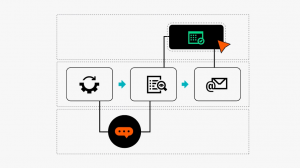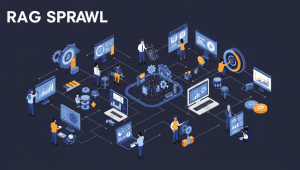Healthy Big Data: It’s a Lifesaver!
![]() It’s not just big businesses that can benefit from harnessing data to streamline their operations. There’s more potential for big data analysis than simply making big profits – with a little creativity, it can also be used to help save lives, as a number of hospitals have discovered in recent months.
It’s not just big businesses that can benefit from harnessing data to streamline their operations. There’s more potential for big data analysis than simply making big profits – with a little creativity, it can also be used to help save lives, as a number of hospitals have discovered in recent months.
One of the most obvious ways in which the healthcare industry can benefit from big data and use the information to save lives is through keeping Electronic Health Records (EHR). The following scenario illustrates exactly how they work, and how lives can be saved.
When the patient arrived, he started twitching uncontrollably. The elderly gentleman had been brought by worried family members to see a specialist at the Kaiser Permanente Santa Clara Medical Center in California late last year. The doctor there thought the man might be having an epileptic seizure—only he soon stopped twitching and, a minute later, seemed fine. Unsure of what to do next, the outpatient doctor called James Lin, chief of the hospital’s emergency department. Should he send the man to neurology, as he would an epileptic patient, or to emergency?
Lin, a fast-talking 38-year-old with brush-cut hair and freckles, had his colleague wait while he looked up the patient’s records on the hospital’s electronic health record (EHR) system. In an instant, he saw that the man had a history of twitching episodes from which he recovered quickly; usually people suffering epileptic seizures tend to remain confused and disoriented afterward. “Send him over to me right away,” Lin said.
Minutes later, Lin put the patient on a cardiac monitor and confirmed that the man’s brain wasn’t the source of his medical issues. He watched as the patient’s heart rate slowed. There was a long pause between beats, during which the man started twitching again. He was at risk of cardiac arrest. Lin transferred him to the intensive care unit, where he was outfitted with a pacemaker in a matter of hours. Lin says the man might have died if he had gone to the neurology clinic. The doctors there don’t have cardiac monitors and might not have diagnosed his condition in time.
See the entire Healthy Big Data Series on Pinterest and Springpad!
.
The Kaiser Permanente Santa Clara Medical Center has, after five years of ironing out problems, recently adopted EHR software from Epic Systems.
At a cost of $4 billion, Epic Systems’ gear certainly doesn’t come cheap – but few patients will care about that. The system integrates each of Kaiser’s 37 hospitals, its 15,857 physicians and its nine million-plus members, enabling the hospital’s doctors to diagnose their patient’s condition far more easily than they could otherwise.
Medical workflow
![]() It’s not just EHR that’s saving lives though. The medical sector is also benefiting from automated workflow software such as that offered from TeleTracking Technologies, which is employed by no less than 80% of the USA’s best hospitals, according to the U.S. News & World Report.
It’s not just EHR that’s saving lives though. The medical sector is also benefiting from automated workflow software such as that offered from TeleTracking Technologies, which is employed by no less than 80% of the USA’s best hospitals, according to the U.S. News & World Report.
TeleTracking offers capabilities including real-time location technology, business analytics and automation software. Through it, hospital managers can track down every single patient, every doctor, and every mobile medical device, all in real-time, enabling them to maximize existing capacity, achieve precision patient placement and better manage discharges.
Michael Gallup, senior vice president of TeleTracking Technologies Inc., outlined the life-saving benefits of his software as follows:
“By automating workflows, continually monitoring status, and offering transparency and visibility throughout the enterprise, hospitals can instantly analyze the root causes of process delays and wait times. This means they can intervene any time a process gets bogged down and correct it before a real problem develops,”
Catching errors
![]() Finally, hospitals are also saving lives in a slightly roundabout kind of way as well. Medical billing errors have long been a problem for hospitals, which struggle to keep track of the various administrative billing systems used in each of their departments. The result is that hospitals lose thousands – if not millions of dollars a year in unpaid bills.
Finally, hospitals are also saving lives in a slightly roundabout kind of way as well. Medical billing errors have long been a problem for hospitals, which struggle to keep track of the various administrative billing systems used in each of their departments. The result is that hospitals lose thousands – if not millions of dollars a year in unpaid bills.
Most patients won’t be too concerned about this but they really should be. The fact is that these lost billings often make the difference between a hospital being operationally viable or not – and if the hospital near your closes down, that suddenly doubles the length of time it takes an ambulance to reach you in an emergency.
Luckily, hospitals won’t lose nearly as much money in this way as they have been, thanks to the new Revenue Cycle Management program from Opera Solutions, a specialist analytics firm which uses pattern-based algorithms to analyze clinical and billing records intelligently and ensure that discrepancies are highlighted and checked.
All that big data gets carefully checked, the hospitals lose less money, more lives are saved. It’s that simple.
A message from John Furrier, co-founder of SiliconANGLE:
Your vote of support is important to us and it helps us keep the content FREE.
One click below supports our mission to provide free, deep, and relevant content.
Join our community on YouTube
Join the community that includes more than 15,000 #CubeAlumni experts, including Amazon.com CEO Andy Jassy, Dell Technologies founder and CEO Michael Dell, Intel CEO Pat Gelsinger, and many more luminaries and experts.
THANK YOU















